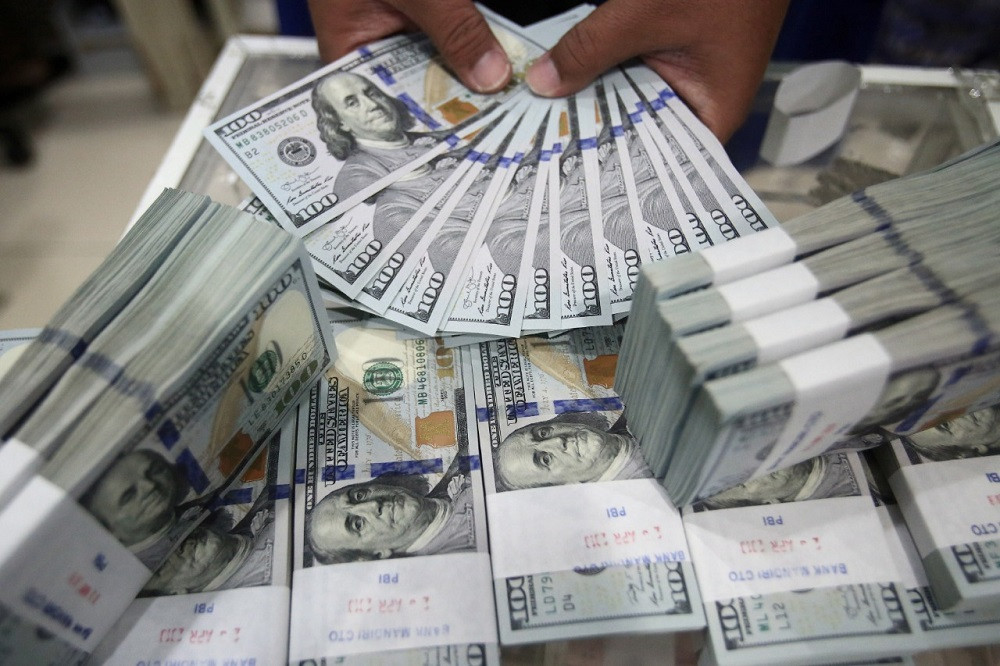Popular Reads
Top Results
Can't find what you're looking for?
View all search resultsPopular Reads
Top Results
Can't find what you're looking for?
View all search resultsBanks do better in H1 but analysts see risks ahead
While banks saw improved performance in the first half of 2021, analysts warn that the second wave of COVID-19 and extended curbs may spell trouble for the industry in the second half.
Change text size
Gift Premium Articles
to Anyone
M
ajor Indonesian banks have shown solid performance in the first half of the year, although analysts warn that the current period could be the calm before the storm as prolonged restrictions to rein in the second wave of COVID-19 could lead to performance deterioration in the second half.
State-owned Bank Mandiri, the largest lender by assets, followed by state-owned Bank Tabungan Negara (BTN) and the country’s biggest private lender Bank Central Asia (BCA), saw net profits increase between 18 and 21 percent year-on-year (yoy) in the second quarter.
Marking the first increase since October 2020, loan disbursements in the banking sector grew 0.59 percent yoy in June, according to Bank Indonesia (BI) and the Financial Services Authority (OJK). Mandiri and BTN saw even faster loan growth at respectively 16.37 percent and 5.59 percent, while BCA recorded 0.3 percent loan contraction.
Bank Danamon and Bank Permata achieved loan growth of 11 percent and 16.6 percent, respectively.
Performance was good with improvements “on the right track”, Suria Dharma, research head at securities firm Samuel Sekuritas, told The Jakarta Post on Monday.
“But since there [was the large-scale] restrictions in the same quarter last year, [this year’s second-quarter] improvements was not significant, as the preceding year had a lower base,” he said.
Read also: Commercial banks stick with rosy credit growth expectations
Suria said banks had capitalized on growth in corporate loans, which had done better than consumer loans. BCA, for one, achieved corporate loan growth of 1 percent in the second quarter, while it recorded a 1.7 percent contraction in consumer loans.
Meanwhile, Bank Mandiri said at its quarterly press conference that the bank would pursue business segments that showed significant growth, like construction and plantations.
Housing mortgages and vehicle loans saw significant growth, mainly due to temporary reductions in value added tax (VAT) for new houses and luxury tax (PPnBM) for new cars.
BCA reached 2.9 percent yoy mortgage growth in the second quarter, the first positive growth since the third quarter of 2020, while its vehicle loan contraction narrowed to 13.4 percent yoy.
BTN saw its subsidized housing loans grow 11.17 percent yoy in the second quarter and its housing loan disbursements grew 4.39 percent yoy, whereas Bank Permata saw its mortgage loans grow a whopping 21.7 percent yoy.
Industry observer Paul Sutaryono, a former assistant vice president of Bank Negara Indonesia (BNI), told the Post that the upward trend in the first half was expected to continue to the end of 2021. He suggested banks to be confident in issuing loans.
“This trend will continue in the second half of 2021. There is no reason for banks to be holding back on loan disbursements, because they have abundant liquidity,” Paul said.
Credit risk looms in Q3
The government announced on Monday that the four-tier public activity restrictions (PPKM) it implemented in early July would be extended for a third time, albeit a shorter duration, to Aug. 9.
Suria of Samuel Sekuritas said the latest extension could jeopardize loan growth in the current quarter at the very least, as banks would remain reluctant to disburse loans.
“There would have been further improvements in Q3 and Q4, but because of the restrictions [extended] yet again, banks will need to reshape their plans, as borrowers’ finances and performance will be disrupted,” he said.
Read also: Restructured loans ‘ticking time bomb’ for banks
BI and the OJK have expressed similar concerns in their statements as both institutions downgraded their national loan growth forecast in response to the prolonged pandemic. BI lowered its forecast to between 4 and 6 percent from 5 to 7 percent, while the OJK lowered its forecast to 6 percent from 7 percent.
Despite the possibility of a bumpy road ahead, Bank Mandiri, BCA and state-owned Bank Rakyat Indonesia (BRI) have stuck with their loan targets so far, banking on improvements toward the year-end.
Analyst Piter Abdullah of the Center of Reform on Economics (CORE) Indonesia said banks remained at risk of more bad loans for the remainder of the year due to the prolonged pandemic and extended curbs. He also said it was too soon to say whether the performance in the first half of the year indicated the industry’s nascent recovery.
“Due to the [PPKM], banks now face additional risks to their loan portfolios. If the economy is under pressure, it will also affect credit risk,” Piter told the Post on Monday, adding that banks were reluctant to issue more credit, as some borrowers were unable to repay loans.
The OJK announced on July 30 that it was mulling over the possibility of extending the loan restructuring program for a second time until 2023, as it expected the pandemic would continue to hamper the government's economic recovery efforts.
Piter concurred, saying that extending the program would help banks.
“We really need to be careful. [Credit] risk will continue to increase, especially if this second wave of [COVID-19] gets out of hand,” he said.










